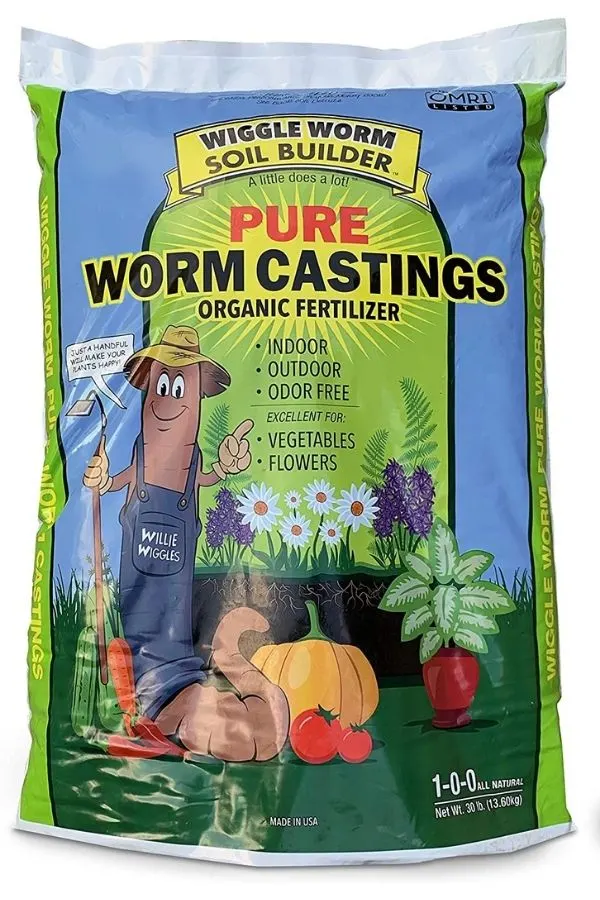Did you know that one of the best ways to fertilize your houseplants is with all natural worm castings?
Worm castings have become one of the best go-to soil additives when planting everything from vegetable plants in the garden to annual flowers in containers, hanging baskets and flowerbeds. But they also happen to be incredible for using on most houseplants too!
Worm castings give plants the perfect balance of nutrients. And in a form that is easily and quickly absorbed. The best part of is that they couldn’t be easier to apply and use. Unlike traditional fertilizers, there is little worry about over-fertilizing and damaging delicate plant foliage.
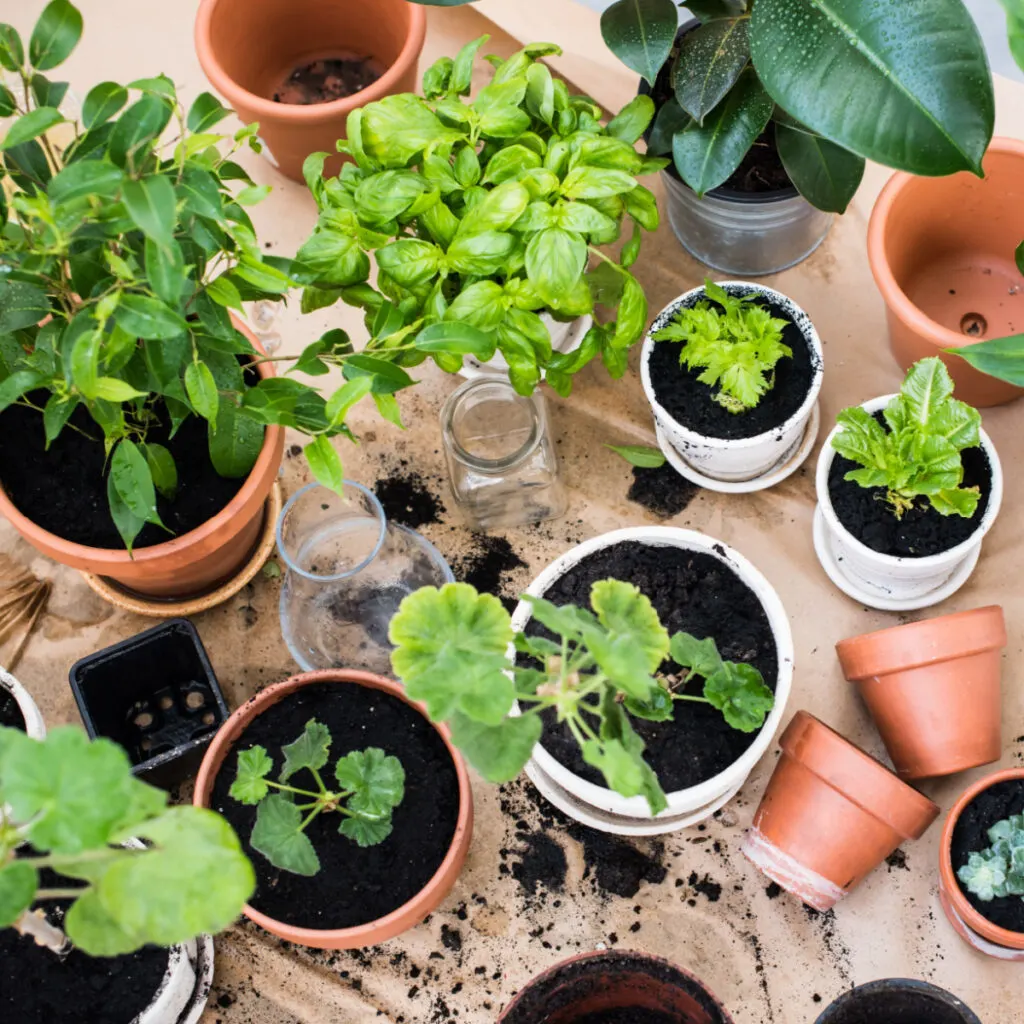
What’s more, worm castings do more than just power plants. They also help to improve your houseplant’s soil composition at the same time. This is the key in helping to make the plants and their root systems strong and healthy.
With powering your indoors plants in mind – here’s a look at why worm castings really are the perfect fertilizer – and exactly how to use them to keep your houseplants looking great all year round!
The Amazing Advantages Of Worm Castings – How To Fertilize Houseplants With Worm Castings
So what exactly are worm castings? Worm castings are essentially the dried manure that is created from worms. As worms travel through the soil, they consume almost everything in their path. This includes all sorts of different organic matter as well as the soil itself.
As the organic matter passes through their digestive tract, it gets broken down into rich, nutrient-packed manure. This manure is loaded with all sorts of great resources like phosphorus, potassium, nitrogen, and calcium – items that plants need to flourish. And it exits as tiny pellets full of energy!
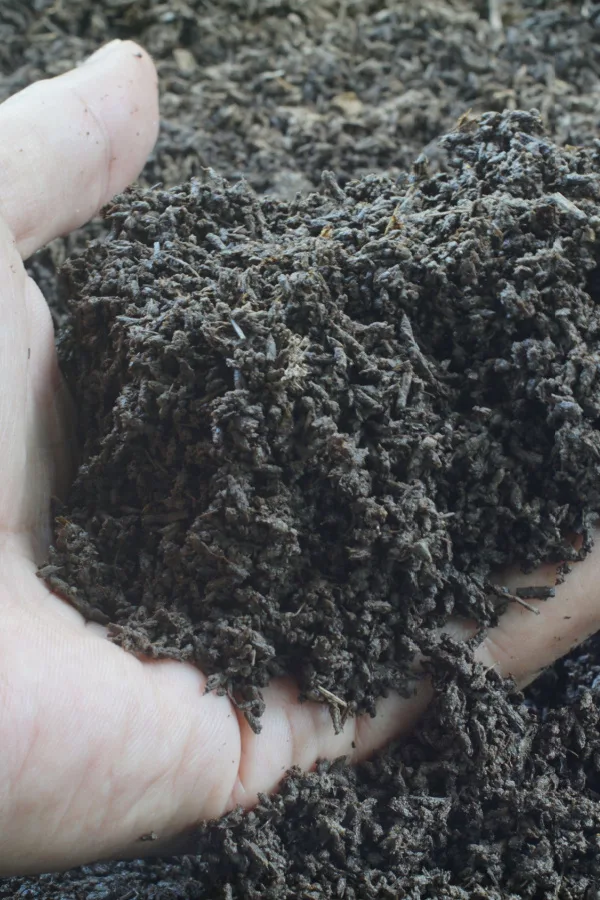
The best part is that these nutrients are well-balanced and more stable than traditional types of manure sources. This means that they won’t overpower or burn plants – which happens to be excellent when dealing with houseplants.
As these castings break down, all of those nutrients and resources are easily absorbed into the surrounding soil. They also absorb into the plant’s roots. The result are houseplants that are healthy, strong and thriving.
How To Fertilize Houseplants With Worm Castings
Purchasing Worm Castings
There are a couple of different ways to get worm castings – you can either purchase them or you can even create your own at home with a homemade worm bin. For most, purchasing is the far easier and faster option.
When buying worm castings, it is important to make sure the product that is 100% pure worm castings. Some brands do add fillers to the castings. Unfortunately, these will not be as pure, rich and useful – and it often makes the nutrients in the castings harder for plants to absorb. (Affiliate Product Link: Wiggle Worm Pure Organic Worm Castings)

Best Ways To Use Worm Castings To Fertilize Houseplants
There are actually several ways to use castings to power your indoors plants. First and foremost, you can make a powerful worm casting tea by soaking worm castings in water. As you will see below, the tea is perfect to for watering and powering your plants all at the same time.
But in addition to making a fertilizing tea, castings you can also use castings as a top dressing on the soil and as an additive to potting soil when potting and repotting plants. Here is a look at how to use any and all of the three methods to help your plants grow better!
Making Worm Casting Tea – How To Fertilize Houseplants With Worm Castings
One of the best ways of all to use worm castings on indoor plants is to create a nutrient-packed “tea”. You can use this tea in rotation with your regular watering schedule to power plants as a low-dose, easily absorbed liquid fertilizer.
To make, mix one cup of worm castings with one gallon of water. Stir and let the combination steep for one to two days. Mix or shake the container a couple of times each day to help distribute the castings within the liquid.
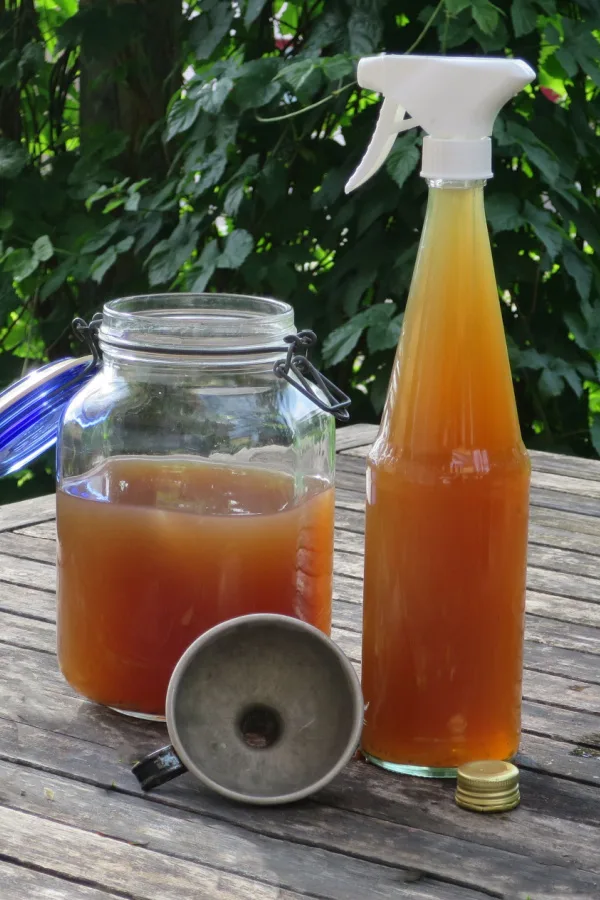
After the castings have soaked, strain out the liquid and use that in place of your water every two to three waterings. You can even pour the worm casting tea directly on the foliage of your plants without worry of burning or damaging the foliage.
Keep any leftover worm casting tea in a closed container. As for the castings you strain away – they are perfect for mixing into the soil of plants – or to put directly into your compost pile.
Using Worm Castings To Top Dress Plants – How To Fertilize Houseplants With Worm Castings
As mentioned earlier, worm castings contain all three of the three most important nutrients that traditional fertilizers contain: Nitrogen, Potassium, and Phosphorus. The castings also contain trace amounts of other nutrients that all work together to power your indoor plants.
Because of this, you can use the castings directly on the soil as a top dressing. Every time you water, the fertilizer will then leach down to the plant’s roots as the water moves through the potting soil. The best part – it sends the plant a perfect low dose of nutrients every time you water.
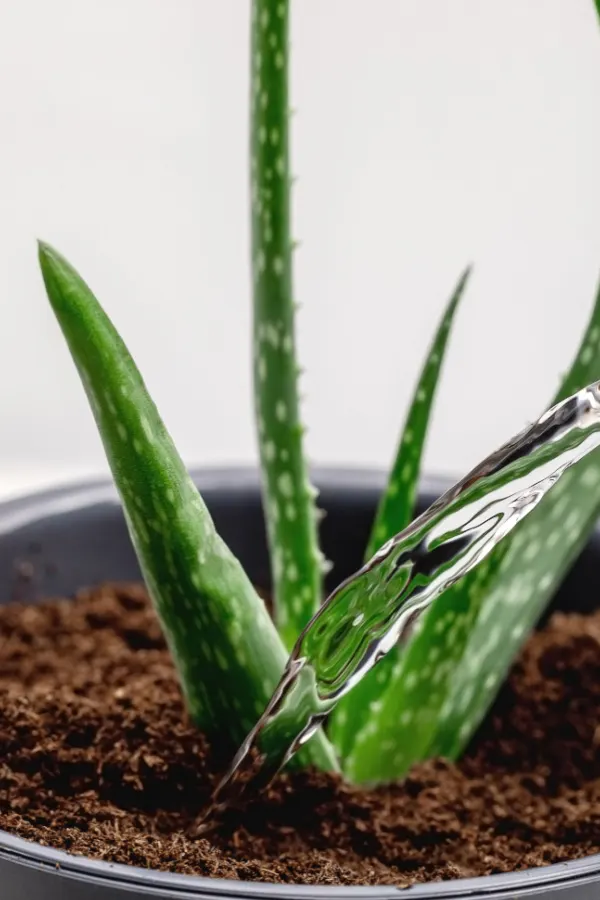
To use indoors, add about ¼ to ½ a cup of worm castings around the top of your indoor houseplant soil. You don’t need to worry if the castings touch the stem of the plant like you do with traditional fertilizers or manure. Because it is so pure and so natural – it simply won’t burn plants.
Adding Worm Castings To Potting Soil – How To Fertilize Houseplants With Worm Castings
Whether you create your own potting soil mixture or purchase commercial products, you can use worm castings to help amend your soil. To make, mix 1 cup of worm castings for every 4 cups of soil. Together, they will create the perfect power-packed potting soil. Also See: How To Make The Best Potting Soil Around!
The addition of worm castings helps to keep your potting soil mixture loose and lightweight. If your potting soil is too dense, the plants struggle to grow and produce roots. Dense soil also tends to retain way too much moisture as well, causing roots to sit in constantly soggy soil, eventually rotting.
While the worm castings help to loosen the soil, they can also absorb more than their weight in moisture. This allows the plants to retain moisture and nutrients without having overly saturated soil. Even better, having worm castings mixed in with the potting soil provides easily absorbed nutrients right there where the plants need them the most – at their roots.
Who knew that a simple byproduct of worms could be so good for plants? Here is to using worm castings to fertilize your houseplants – and to growing better than ever indoors!
Follow Our Facebook Page For Even More Great Tips! Simple Garden Life Facebook Page
Simple Garden Life is a website dedicated to keeping gardening fun, simple and enjoyable! We publish two new articles each week along with a new garden podcast episode every two weeks. This article may contain affiliate links.

